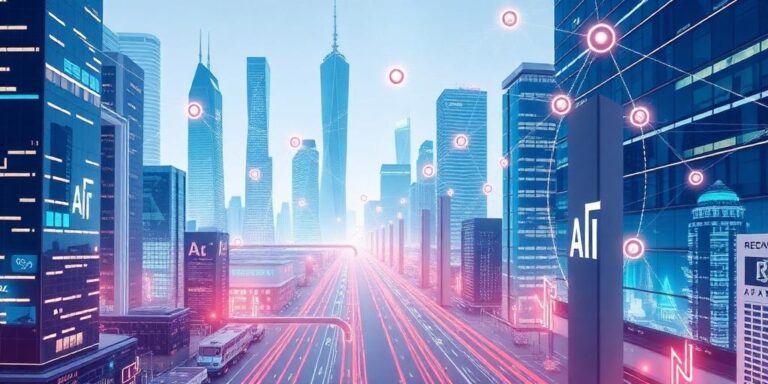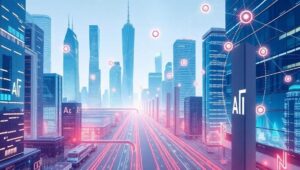The Future of IoT APIs and Service Integration (2025)
The Internet of Things (IoT) is rapidly evolving, and by 2025, the landscape of IoT APIs and service integration will be significantly different from what we see today. This article explores the key trends and developments expected in this space, providing insights for businesses and developers looking to leverage the full potential of IoT.
Current State of IoT APIs and Integration
Currently, IoT ecosystems are often fragmented, with devices, platforms, and services operating in silos. Integration is complex, requiring custom solutions and significant development effort. APIs are often proprietary, limiting interoperability and scalability.
Key challenges include:
- Lack of Standardization: Diverse protocols and data formats hinder seamless integration.
- Security Concerns: Vulnerabilities in APIs can expose IoT devices and data to cyber threats.
- Scalability Issues: Existing architectures struggle to support the growing number of IoT devices and data volumes.
- Complexity: Integrating IoT devices with existing enterprise systems is often time-consuming and costly.
Trends Shaping the Future of IoT APIs and Service Integration
Several key trends are poised to reshape the future of IoT APIs and service integration by 2025:
- Standardized APIs and Protocols:
- Trend: Increased adoption of standardized APIs and protocols (e.g., MQTT, CoAP, HTTP/2) to improve interoperability.
- Impact: Easier integration between devices, platforms, and services, reducing development time and costs.
- API Management Platforms:
- Trend: Rise of comprehensive API management platforms that offer features like API discovery, security, monitoring, and monetization.
- Impact: Streamlined API lifecycle management, enhanced security, and new revenue opportunities.
- Low-Code/No-Code Integration:
- Trend: Emergence of low-code/no-code platforms that simplify IoT service integration.
- Impact: Enables citizen developers to create IoT solutions without extensive coding knowledge, accelerating innovation.
- Edge Computing:
- Trend: Increased use of edge computing to process data closer to the source, reducing latency and bandwidth usage.
- Impact: Faster response times, improved privacy, and enhanced reliability for IoT applications.
- AI-Powered Integration:
- Trend: Integration of AI and machine learning to automate and optimize IoT service integration.
- Impact: Intelligent routing of data, predictive maintenance, and anomaly detection, improving overall efficiency.
- Blockchain for IoT:
- Trend: Use of blockchain technology to secure IoT data and enable decentralized device management.
- Impact: Enhanced security, improved data integrity, and new business models for IoT.
Use Cases and Applications
The evolution of IoT APIs and service integration will unlock new use cases and applications across various industries:
- Smart Cities: Integrated sensors and systems for traffic management, waste disposal, and energy conservation.
- Healthcare: Remote patient monitoring, telehealth, and connected medical devices improving patient outcomes.
- Manufacturing: Predictive maintenance, supply chain optimization, and automated quality control.
- Agriculture: Precision farming, livestock monitoring, and resource management.
- Retail: Personalized shopping experiences, inventory management, and supply chain optimization.
Challenges and Considerations
Despite the promising outlook, several challenges and considerations must be addressed:
- Security: Implementing robust security measures to protect IoT devices and data from cyber threats.
- Privacy: Ensuring compliance with data privacy regulations and protecting user data.
- Interoperability: Promoting standardization and interoperability to avoid vendor lock-in.
- Scalability: Designing scalable architectures that can handle the growing number of IoT devices and data volumes.
- Skills Gap: Addressing the shortage of skilled professionals in IoT development and integration.
Preparing for the Future
To prepare for the future of IoT APIs and service integration, businesses and developers should:
- Invest in API Management Platforms: Choose platforms that offer comprehensive features and support for standardized APIs.
- Embrace Low-Code/No-Code Solutions: Explore low-code/no-code platforms to accelerate IoT development and integration.
- Prioritize Security: Implement robust security measures to protect IoT devices and data.
- Focus on Interoperability: Adopt standardized APIs and protocols to ensure seamless integration.
- Develop Skills: Invest in training and development to build expertise in IoT technologies.
Conclusion
The future of IoT APIs and service integration in 2025 promises to be more connected, secure, and efficient. By embracing standardized APIs, leveraging API management platforms, and adopting low-code/no-code solutions, businesses and developers can unlock the full potential of IoT and create innovative solutions that drive growth and improve lives. Staying informed and proactive will be key to navigating this evolving landscape and capitalizing on the opportunities it presents.




